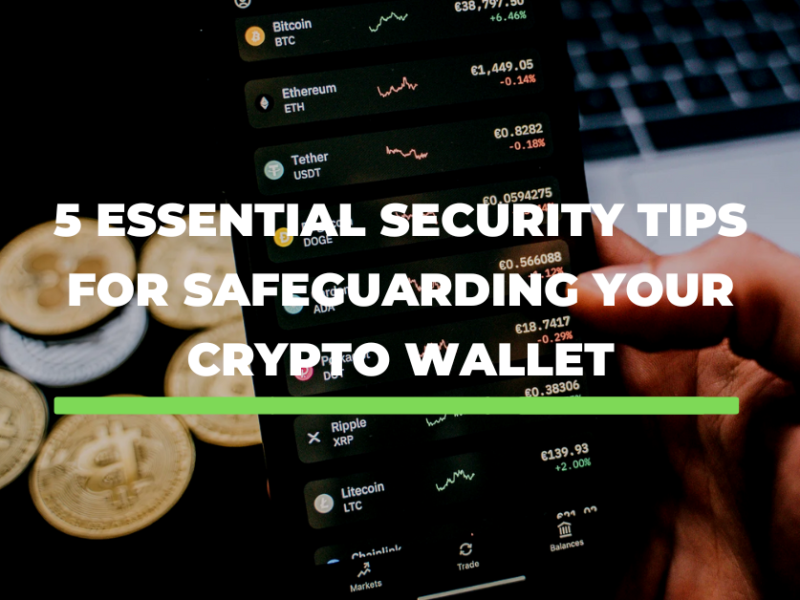In the world of cryptocurrency, security is paramount. As digital assets become increasingly valuable, protecting your holdings from theft and loss is essential. One of the most effective ways to enhance your crypto security is by using multi-signature (multi-sig) wallets. This blog post will guide you through the concept of multi-signature wallet, their benefits, and a step-by-step process on how to set one up.

What is a Multi-Signature Wallet?
A multi-signature wallet is a type of cryptocurrency wallet that requires more than one private key to authorize a transaction. Instead of relying on a single key, which can be vulnerable to theft or loss, multi-signature wallets distribute control across multiple keys. This means that transactions can only be completed if a predefined number of keys are used to sign them.
Why Use Multi-Signature Wallet?
1. Enhanced Security: Multi-sig wallets provide an added layer of security by requiring multiple keys for transaction approval. This reduces the risk of unauthorized access and ensures that even if one key is compromised, the funds remain secure.
2. Shared Control: Multi-sig wallets are particularly useful for organizations or groups where multiple individuals need to approve transactions. This prevents a single person from having full control over the funds, which can be beneficial for managing funds in a transparent and democratic manner.
3. Reduces Risk of Loss: In the event that a private key is lost or misplaced, multi-sig wallets can still function as long as the required number of keys is available. This mitigates the risk of losing access to your funds entirely.
How to Set Up a Multi-Signature Wallet
Step 1: Choose a Multi-Signature Wallet Provider
Several cryptocurrency wallet providers offer multi-signature functionality. Some popular options include:
- Electrum: A versatile Bitcoin wallet with multi-sig support.
- Armory: Known for its advanced security features and multi-sig capabilities.
- BitGo: A professional-grade wallet for Bitcoin and other cryptocurrencies, ideal for institutional use.
Choose a provider based on your needs, supported cryptocurrencies, and ease of use.
Step 2: Install the Wallet Software
Download and install the wallet software from the official website of your chosen provider. Follow the installation instructions and ensure that you are using the latest version of the software to avoid potential security vulnerabilities.
Step 3: Create a New Multi-Signature Wallet
Once installed, open the wallet software and select the option to create a new wallet. You will be prompted to choose the type of wallet you want to create. Select the multi-signature option.
Step 4: Configure the Multi-Signature Settings
You will need to configure the multi-signature settings, including the number of private keys required to authorize a transaction and the total number of keys in the wallet. For example, you might set up a 2-of-3 multi-signature wallet, where two out of three keys are needed to approve a transaction.
Step 5: Generate and Secure Private Keys
Generate the private keys according to the wallet’s instructions. Each key should be stored securely and independently. Consider using hardware wallets or secure offline storage methods to protect your keys from theft or loss. Do not share your private keys with anyone.
Step 6: Add Co-Signers (If Applicable)
If you are setting up a multi-sig wallet with other individuals or team members, provide them with their respective private keys and ensure they follow secure storage practices. Each co-signer will need to input their key when approving transactions.
Step 7: Test Your Multi-Signature Wallet
Before transferring significant amounts of cryptocurrency to your new wallet, perform a test transaction with a small amount to ensure that everything is functioning correctly. Verify that the multi-signature requirements are being enforced and that transactions are properly signed.
Step 8: Monitor and Maintain Your Wallet
Regularly monitor your multi-signature wallet to ensure that all keys are secure and functioning properly. Update the wallet software as needed and review your security practices periodically to stay ahead of potential threats.
Conclusion
Setting up a multi-signature wallet is a crucial step in maximizing the security of your cryptocurrency holdings. By distributing control across multiple keys, you significantly reduce the risk of unauthorized access and loss. Whether you are an individual investor or part of an organization, a multi-signature wallet can provide peace of mind and safeguard your digital assets.
Remember to choose a reputable wallet provider, securely manage your private keys, and regularly review your security practices. With the right approach, you can enjoy enhanced security and greater control over your crypto holdings.



Thanks
Look
😊😊😊
မင်္ဂလာပါ
မင်္ဂလာပါ
မင်္ဂလာပါ
Thank you
Thanks 😍😘